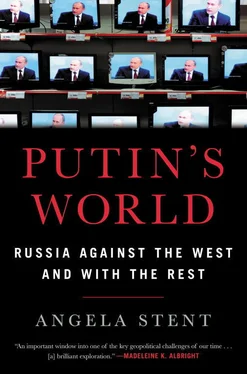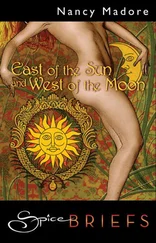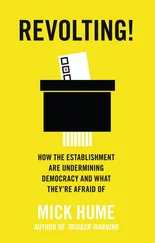In a new era of strongmen, Vladimir Putin stands out as one of the strongest. During his time in power, Russia has reasserted itself on the world stage, a remarkable feat for a country that experienced such rapid decline in the 1990s, only to accomplish an unexpected resurgence after Putin entered the Kremlin. He has made it his mission to relitigate the end of the Cold War and renegotiate its terms. As he embarked on his fourth term, Russia’s relations with the West were the worst they had been since the last years of the Brezhnev period in the early 1980s, with an escalating arms race and mutual ideological invective. Thirty-five years ago, a succession of aging, infirm Soviet leaders faced Ronald Reagan, a self-confident US president who denounced their country as an “evil empire.” Today, the mutual mistrust, rhetorical invective, and steady military buildup are strongly reminiscent of the Cold War, as is the dissonance between the way America and Russia see each other.
But Cold War 2.0 is different. There is no universal ideological competition between the West and Russia. Russia’s ideological appeal is to “compatriots” in the post-Soviet space, to left-and right-wing populists in the West, and to a diverse group of countries and people around the world who dislike the United States. The United States is much stronger militarily than is Russia, and it used to view Moscow more as a regional than as a global strategic competitor, although Russia believes it has recently indeed become a greater and global competitor to the United States, thanks to Putin’s accomplishments. Moreover, Russia, unlike the USSR, is integrated into the global economy, and this gives it leverage the Soviets never had. It also gives it vulnerabilities.
This is no longer a bipolar world, for China has emerged as the key rising power that holds many big global cards. And there is another difference. During the Cold War, the USSR and the West engaged each other through established political and military government-to-government channels with rules of the game that they both accepted. In the system of personalized rule that Putin has created, these channels are moribund or largely gone, and there are fewer avenues for communication, and hence more opportunities for miscalculation and consequential mistakes. So the West has returned to the familiar dual-track Cold War prescriptions for dealing with an antagonistic Russia: deterrence and engagement.
Viewed from the Kremlin, however, Putin has achieved his major objectives. Russia has restored itself to its “rightful” place on the world stage. It has, once again, joined the global board of directors. The world can no longer ignore it. It is respected—and feared. Even as Russia’s relations with the West deteriorate, the West has to deal with it. At a major defense and security conference in Moscow, the Chinese defense minister jolted his audience when he vowed that China would come to Russia’s assistance were it to be attacked by the West. In 2018 China joined Russia in its massive Vostok military exercises. Western commentators may describe Russia as a “pariah state” or a “mafia state.” But Beijing, as we have seen, aligns with Moscow in international fora, and much of the Middle East views Russia’s role in the region as that of a pragmatic mediator and broker. In Central Asia, Russia is also recognized as a great power with which to be reckoned.
As the West wrestles over how to deal with Putin, it is important to remember that in many parts of the world Russia is viewed as a large authoritarian country ruled by a successful leader who is pursuing his country’s legitimate national interests as he defines them. Moreover, much of the world’s view of Russia is colored by how the world regards the United States. In the unpredictable age of Donald Trump, Russia’s attractiveness has grown for some countries. As this book has shown, going back to 2014, China has upgraded Russia as a partner, taking advantage of the West’s attempts to isolate Putin, and has sought to recruit Russia to its version of a post-West global order. Some of Russia’s neighbors, especially Ukraine, view Russia as an antagonist. But Russia has managed to create several functioning multilateral institutions in the post-Soviet space, such as the Shanghai Cooperation Organization, the Collective Security Treaty Organization, and the Eurasian Economic Union. Key Middle Eastern countries—Iran, Syria, Saudi Arabia, Egypt, Israel—look to Russia to support their interests in the region, even though these countries are on opposite sides of ongoing conflicts and, in some cases, are deadly enemies. And the West itself is fragmented; it has no unified view of Russia as a hostile actor. For instance, after the poisoning of former Russian double agent Sergei Skripal and his daughter in Great Britain, the United States and more than two dozen other countries supported England in expelling Russian diplomats suspected of spying. But these were nearly all NATO or EU members, plus Australia and Ukraine, and even some EU members, such as Austria and Slovakia, refused to follow suit. Under Putin, some of Russia’s former allies in the Warsaw Pact, notably Hungary, Slovakia, Bulgaria, and the Czech Republic, have moved closer to Moscow.
Vladimir Putin won his 2018 reelection by an unprecedented margin. True, no credible opponents challenged him, and there were many reported voting irregularities. But it is undeniable that he remains popular, particularly outside the major urban centers. The Kremlin controls virtually all electronic media and skillfully uses television to persuade the population of its narrative of world events. Many young people, who have known only Putin as their president, support him. They believe that Russia needs a strong leader and, like so many generations of Russians before them, are willing to delegate to him the authority to make decisions for them. During his election campaign, Putin appealed to the people both by warning them of the danger the United States and its allies posed to Russia and by reminding them that he had restored Russia to greatness. According to the respected Levada polling organization, many Russians believe the annexation of Crimea forced the West to respect Russia, and more than 70 percent say that Russia has achieved superpower status. Russia now has the ability to project power well beyond its neighborhood, and it is venturing back into Latin America, Africa, and other places from which it withdrew after the Soviet collapse. Its return to Latin America has been particularly striking, with a focus on Cuba, Colombia, Mexico, Brazil, and Venezuela, where it continues to prop up the failing Maduro regime both economically and militarily. 3Despite its economic weakness, and an economy smaller than Italy’s (Russia’s $1.3 trillion GDP as opposed to the United States’ $18.6 trillion, and per capita income in 2017 of $11,440 as compared to the US’s $ 53,528), its global influence is spreading. 4
THE SEVEN PILLARS OF PUTIN’S WORLD
The core driver of Putin’s world is the quest to get the West to treat Russia as if it were the Soviet Union. A review of both his words and his actions suggests his foreign policy has been shaped by seven key propositions—a sort of bill of rights in Moscow’s view—for Russia on the international stage. These are all designed to reverse the consequences of the Soviet collapse and renegotiate the end of the Cold War:
Firstly, he believes, Russia has a right to a seat at the table on all major international decisions and will insist on inclusion. The West should recognize that Russia belongs to the global board of directors.
Second, Russia’s interests are as legitimate as those of the West, and it will press for the US and Europe to acknowledge and accept this fact of life even if they disagree with Russia.
Читать дальше












